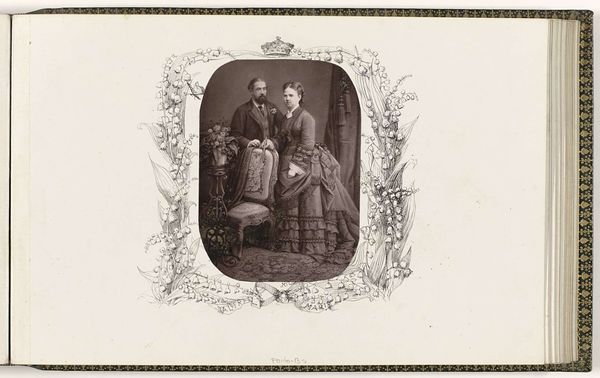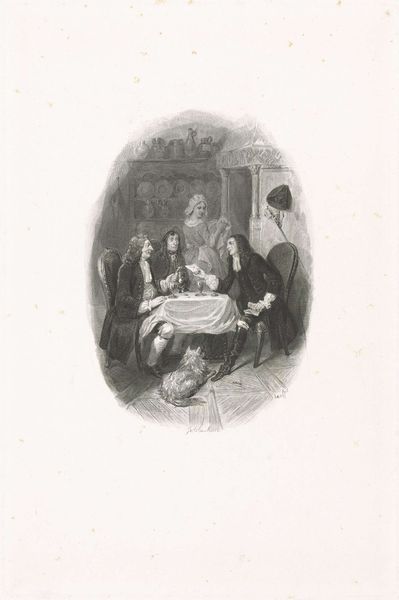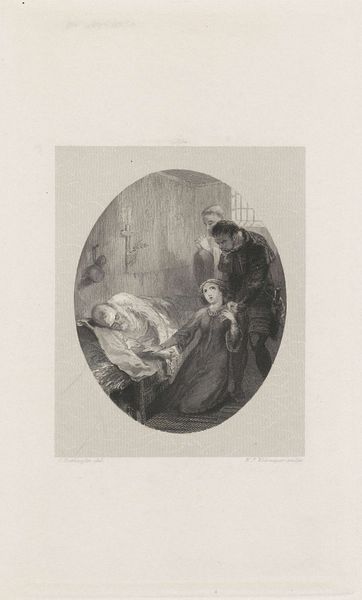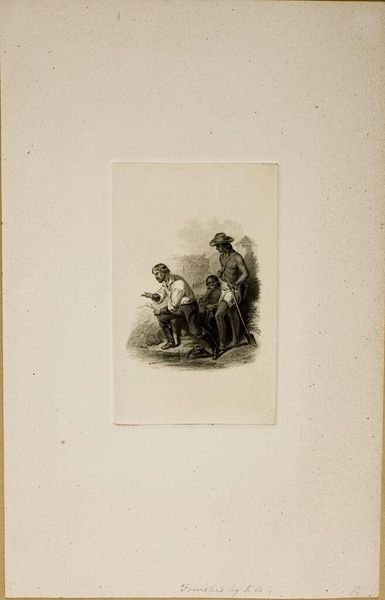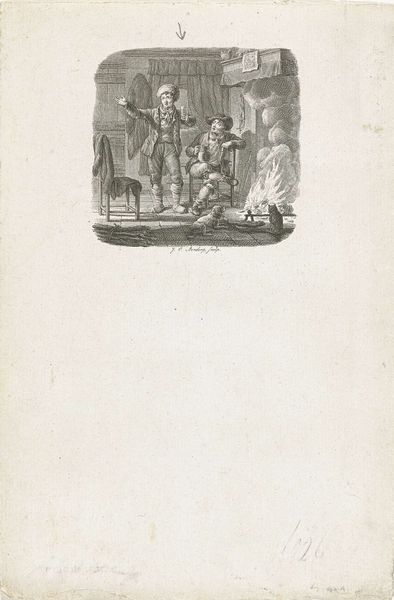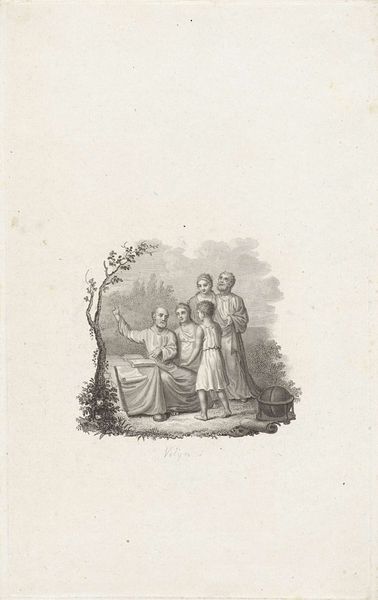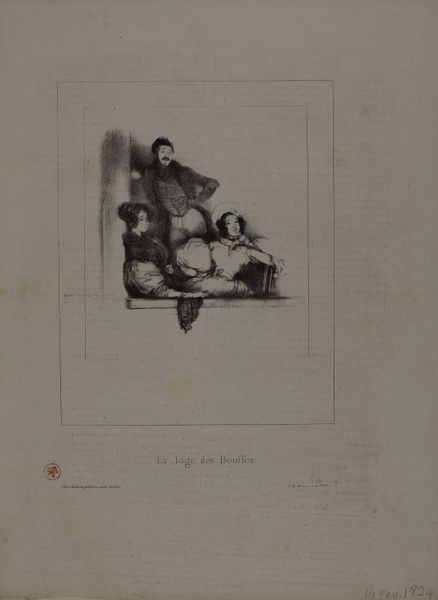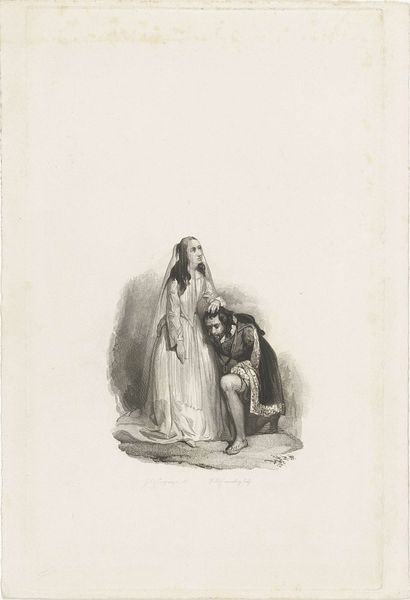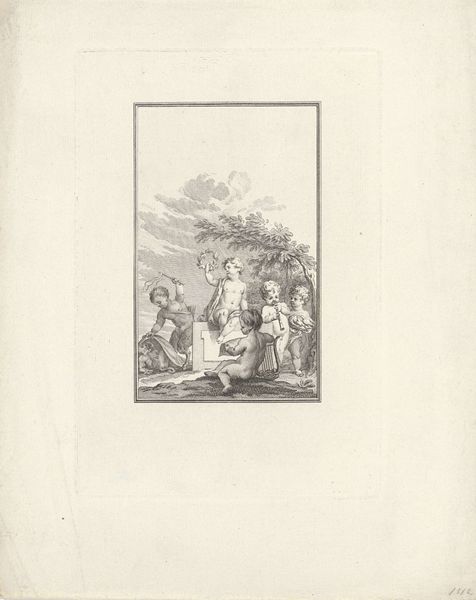
print, engraving
# print
#
figuration
#
romanticism
#
history-painting
#
engraving
Dimensions: height 248 mm, width 160 mm
Copyright: Rijks Museum: Open Domain
Editor: This is "Knight with a Seated Lady," an 1837 engraving by Johannes de Mare. It gives me a sense of subdued drama, everyone seems so tense! How do you interpret this work? Curator: I see a potent depiction of power dynamics through the language of objects and posture. Notice the knight in full armor: armor doesn’t only signal strength but protection and inaccessibility. He’s heavily shielded. Why do you think he needs protection? Editor: Perhaps because the lady looks as though she’s arguing, or in distress? Is the armor also a status symbol? Curator: Absolutely. Consider also how the men behind the knight observe, and even the architectural arch above reinforces this framing and containment. Do you think the space serves to elevate the scene, or imprison her? The cultural memory associated with knights, particularly in the romantic era, would associate the knight as a rescuer or protector of the lady, however, based on what we see in her face, and the tension of the composition as a whole, it feels more ominous. Editor: That’s a good point. I didn't consider the way the architecture might reinforce a sense of confinement. Is she imprisoned by the social expectations of her time, too? Curator: Precisely. Engravings like this became ways to depict stories but also cultural values; who has agency and who does not. They also allow these stories to be disseminated widely. This image asks us to confront whose story is truly being told and for what purposes. Editor: I hadn't thought about it that way. It’s interesting to consider the cultural impact an image like this might have had! Curator: Indeed. It really prompts us to think about the layers of meaning embedded in historical depictions, and how symbols shift and speak across time.
Comments
No comments
Be the first to comment and join the conversation on the ultimate creative platform.


